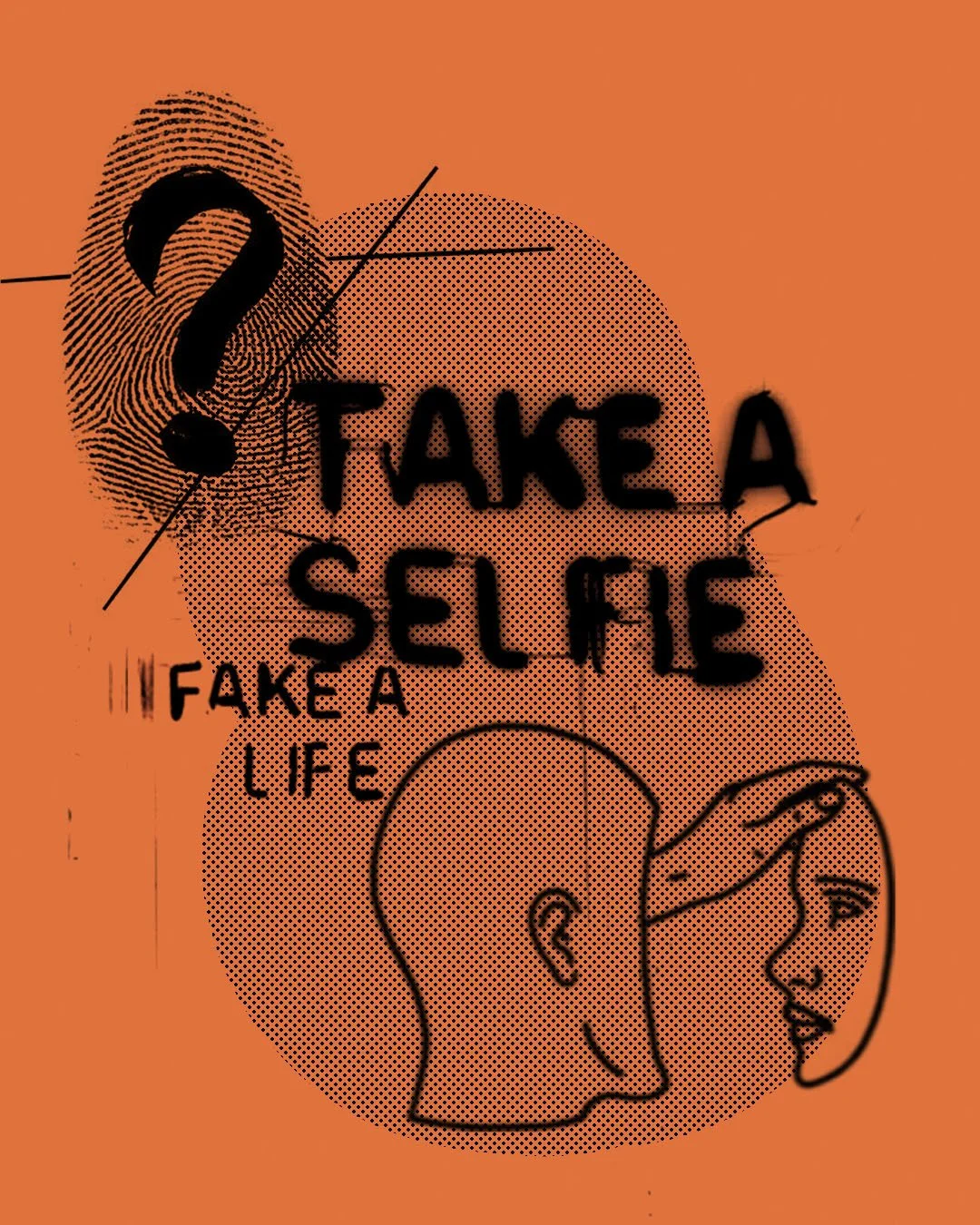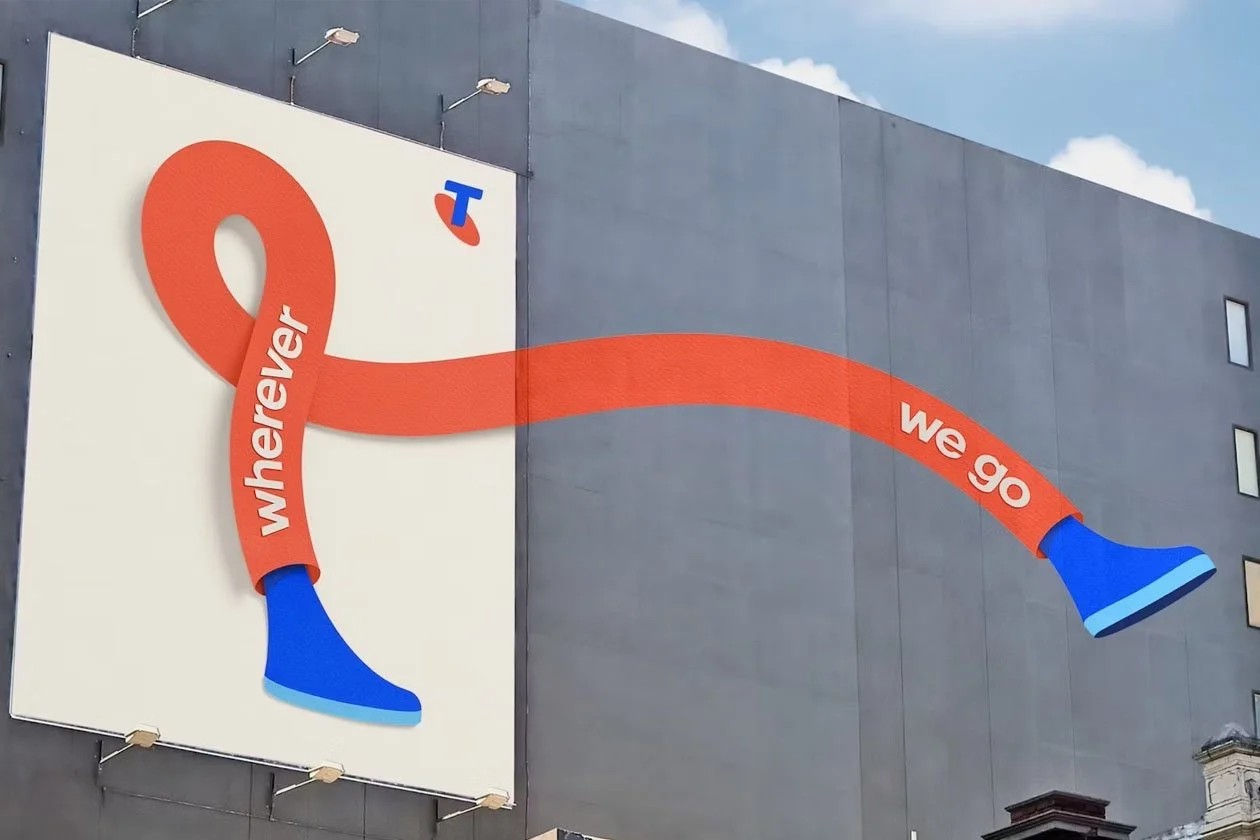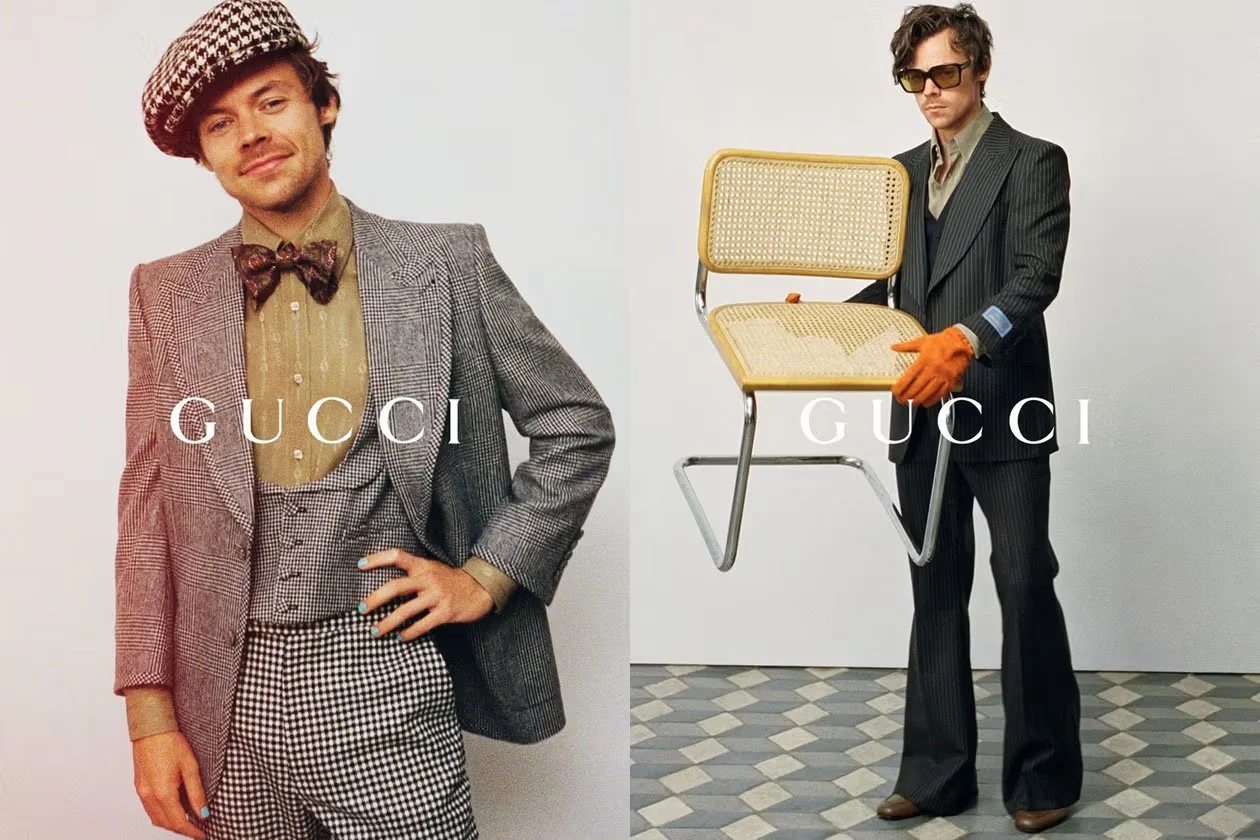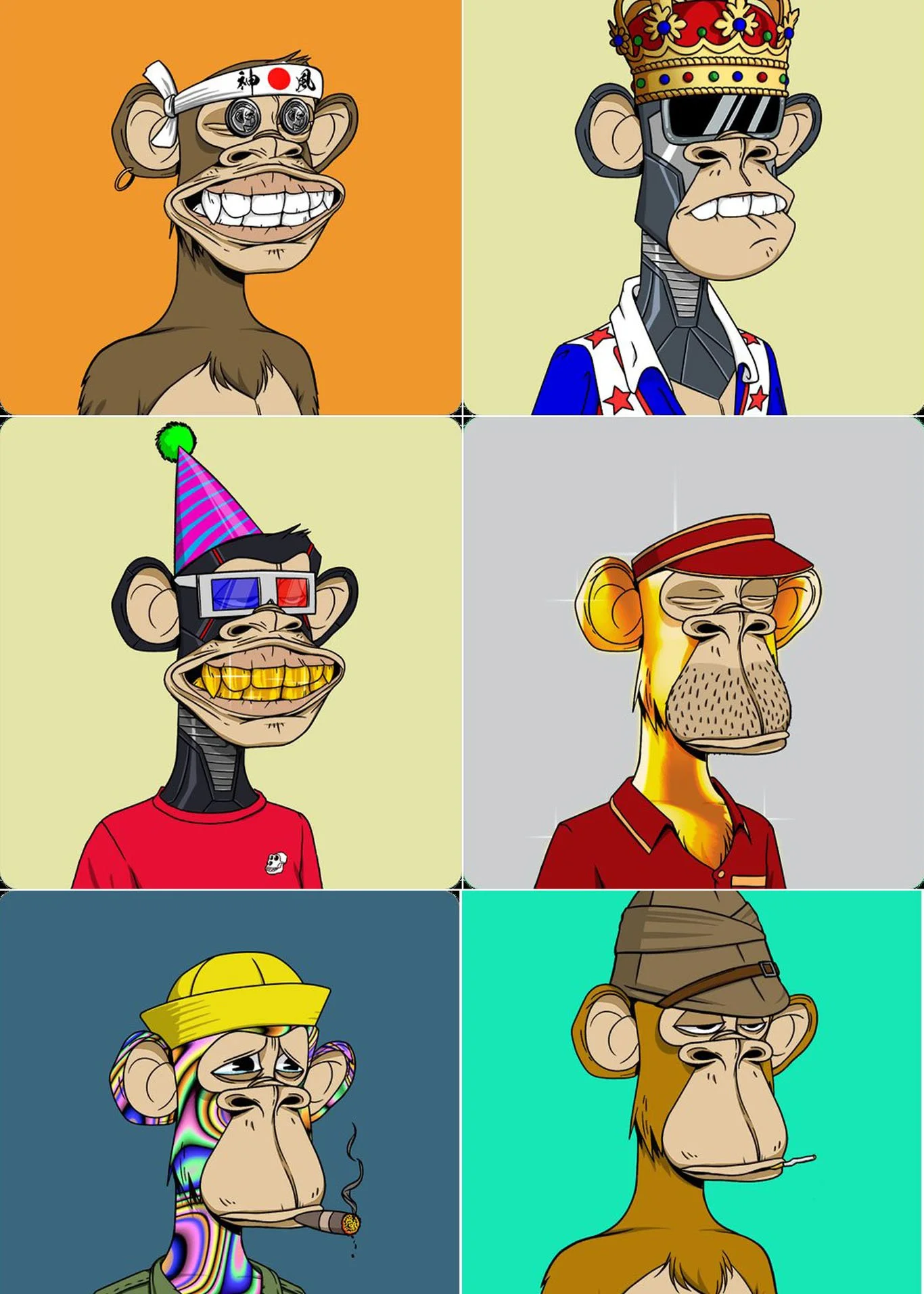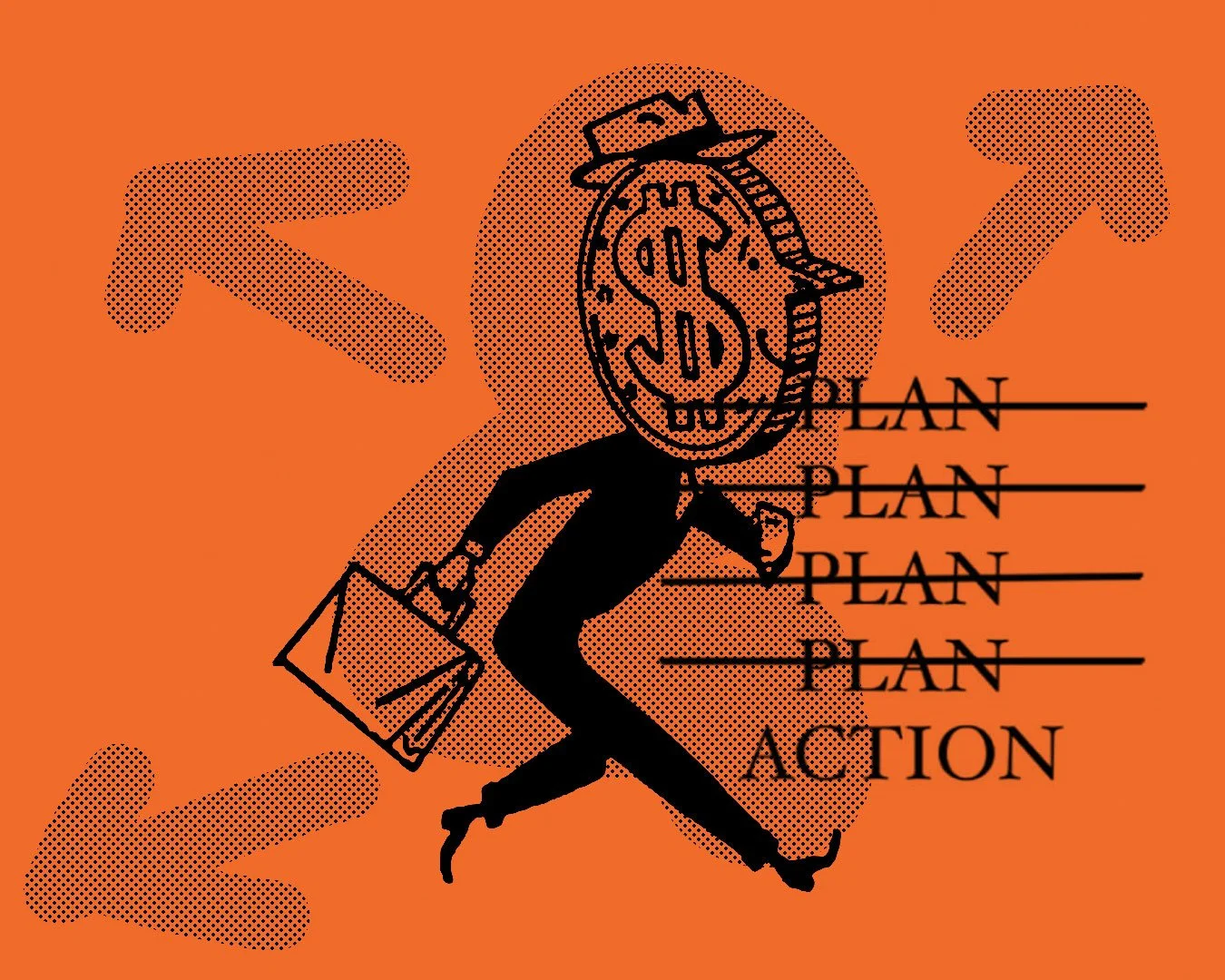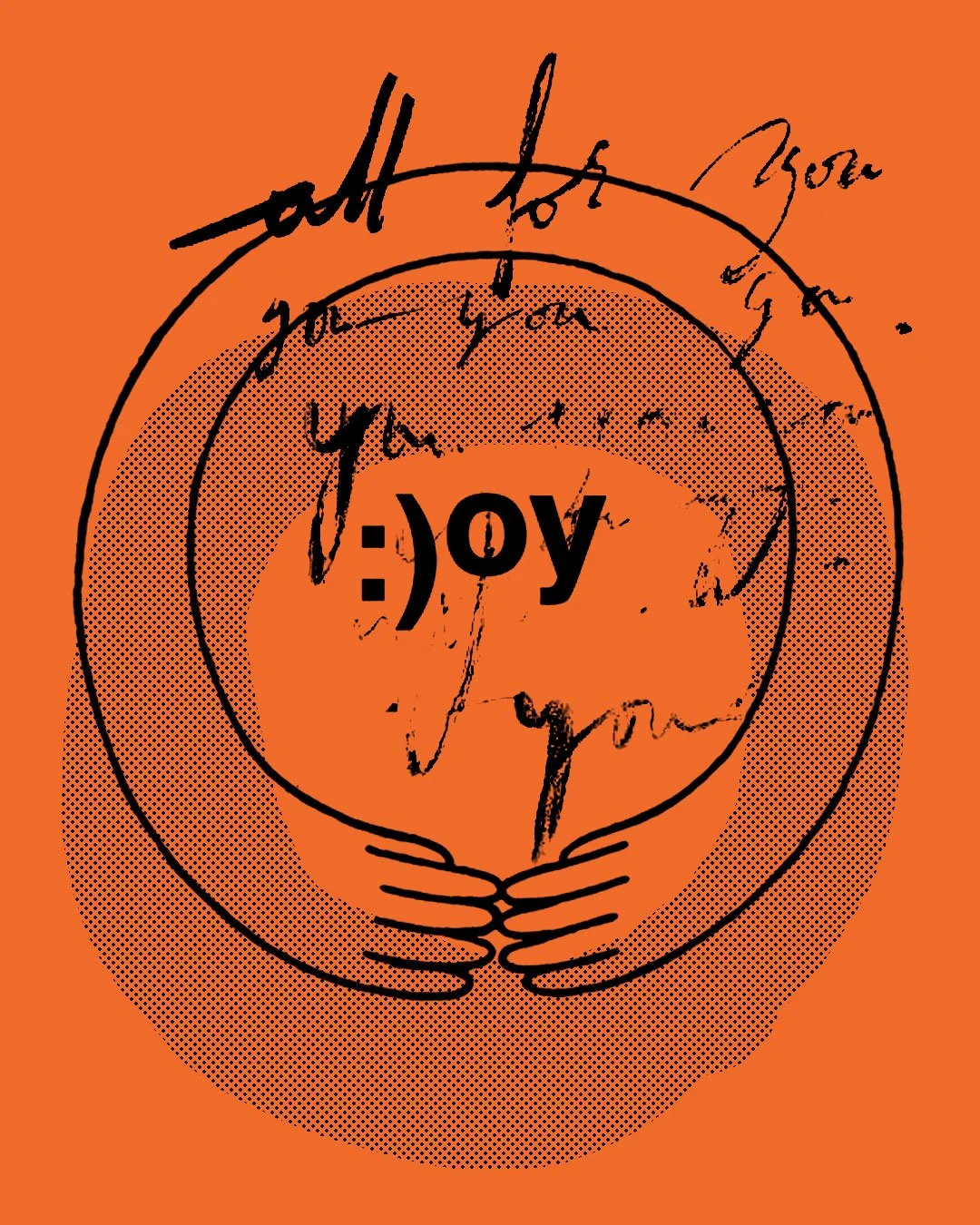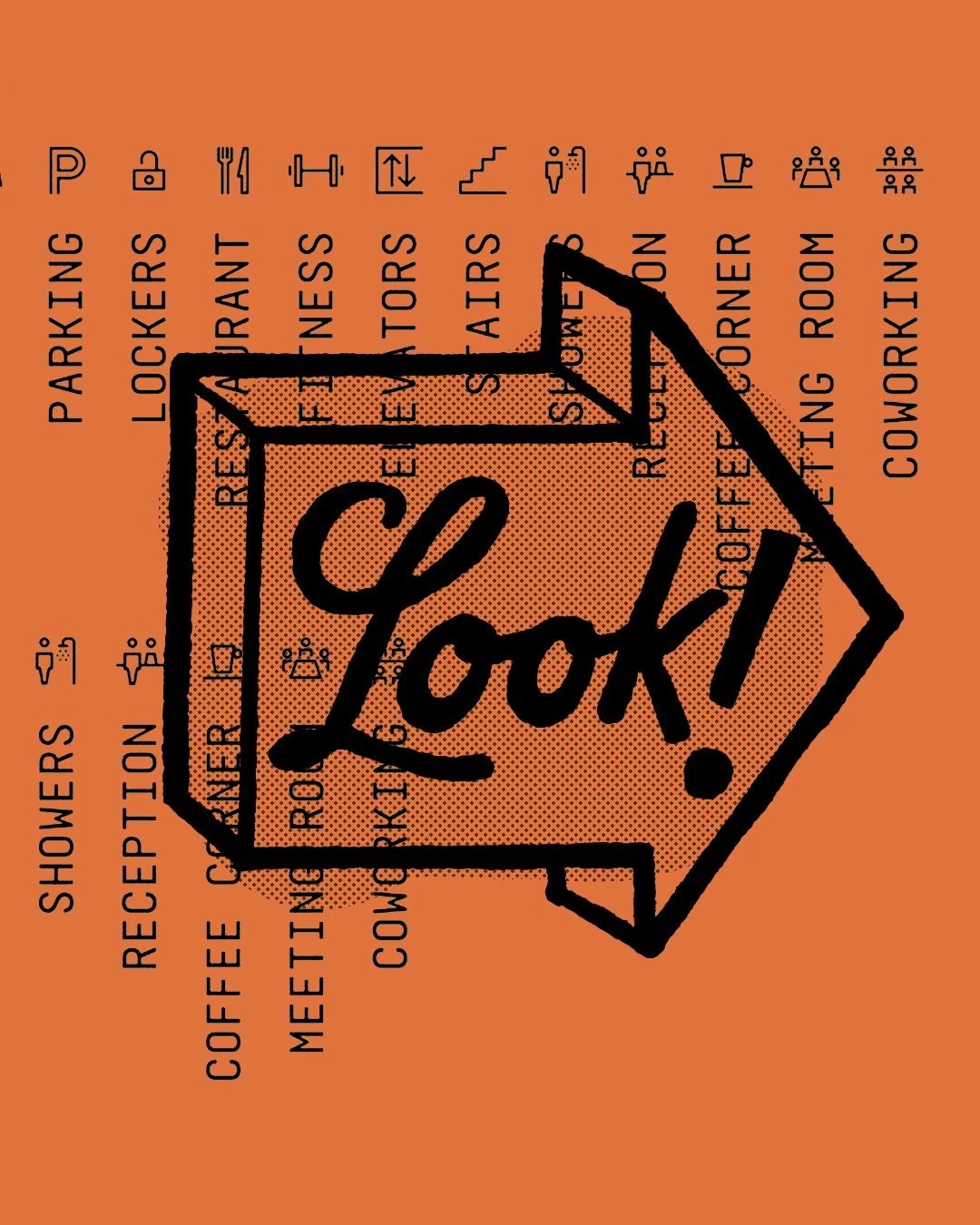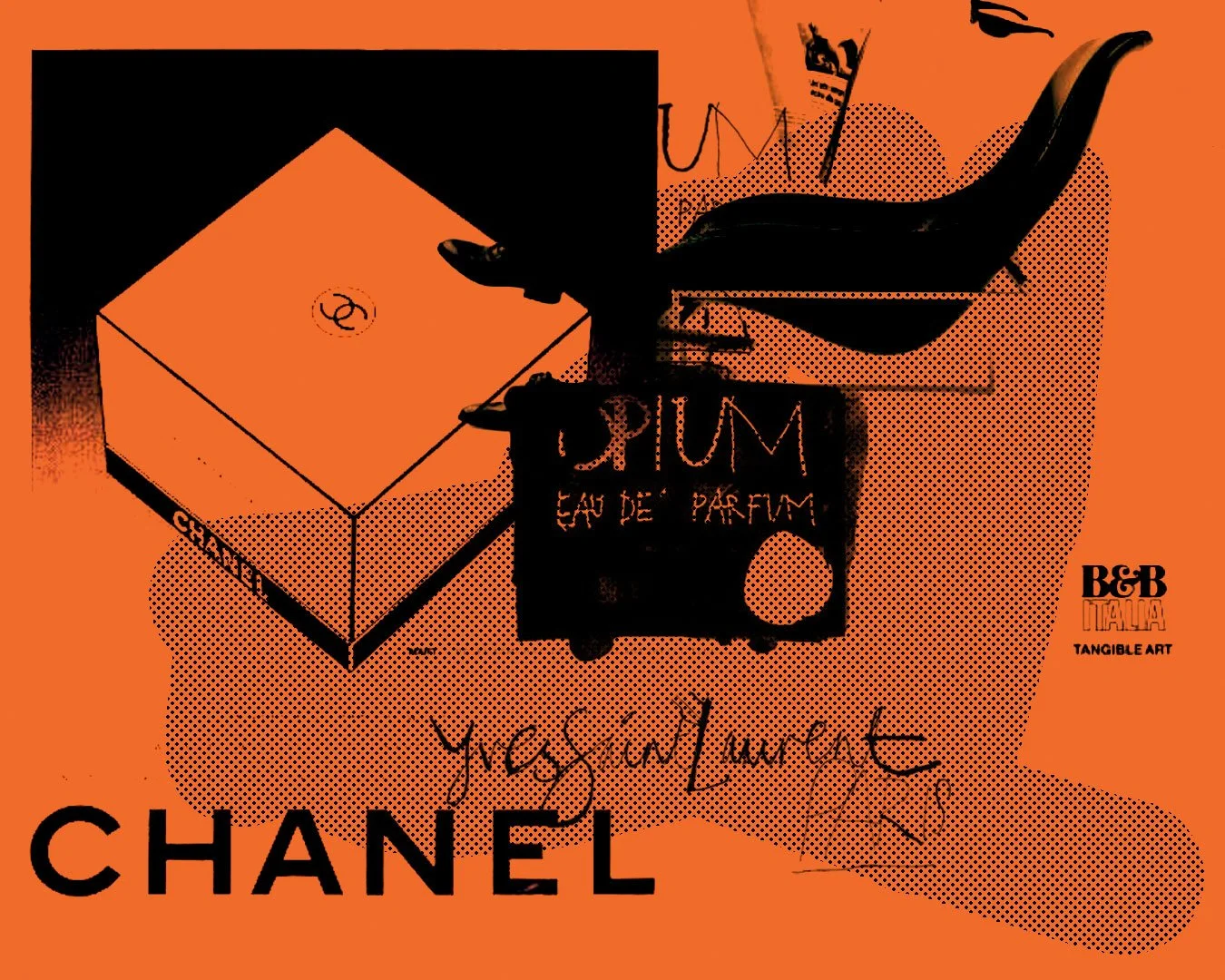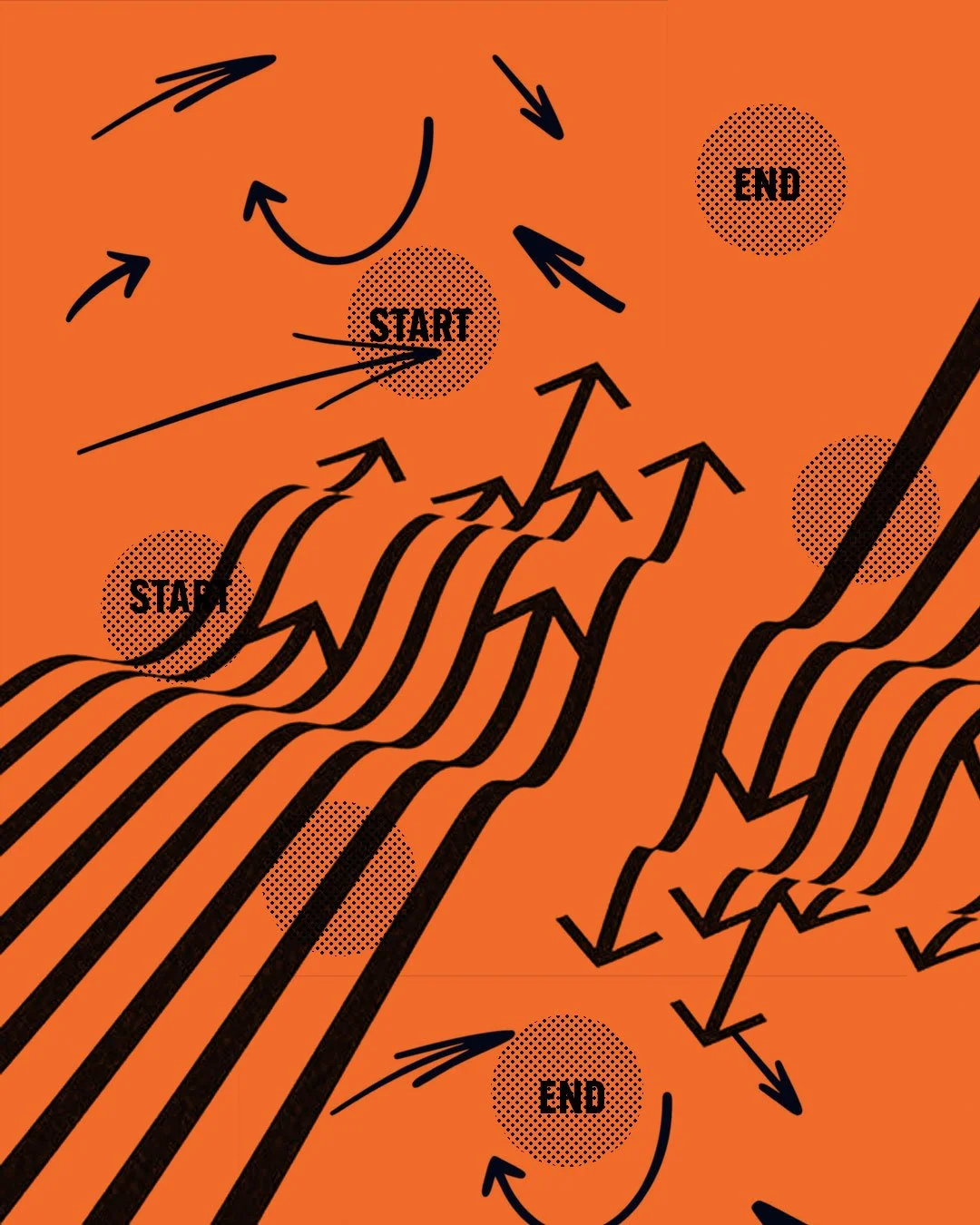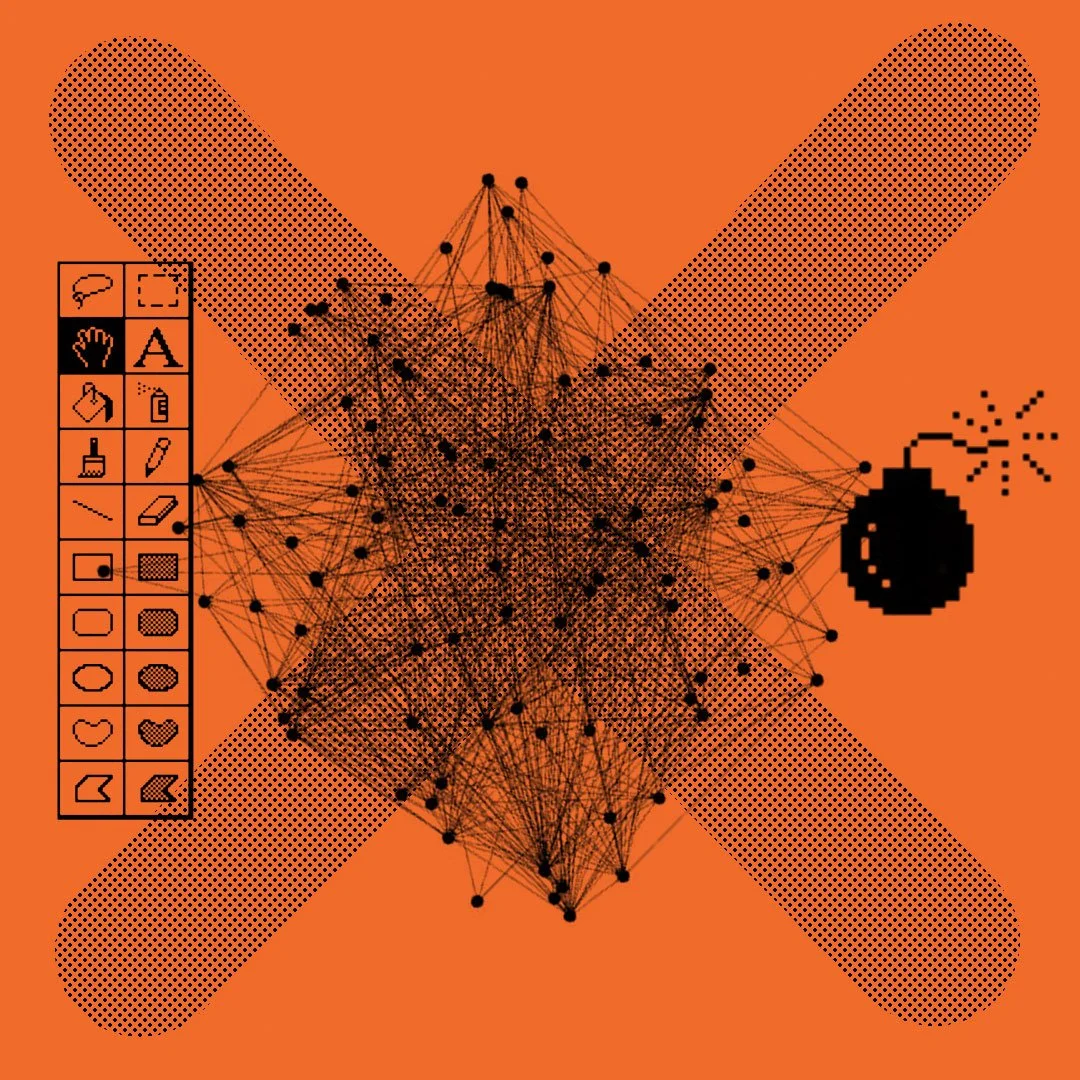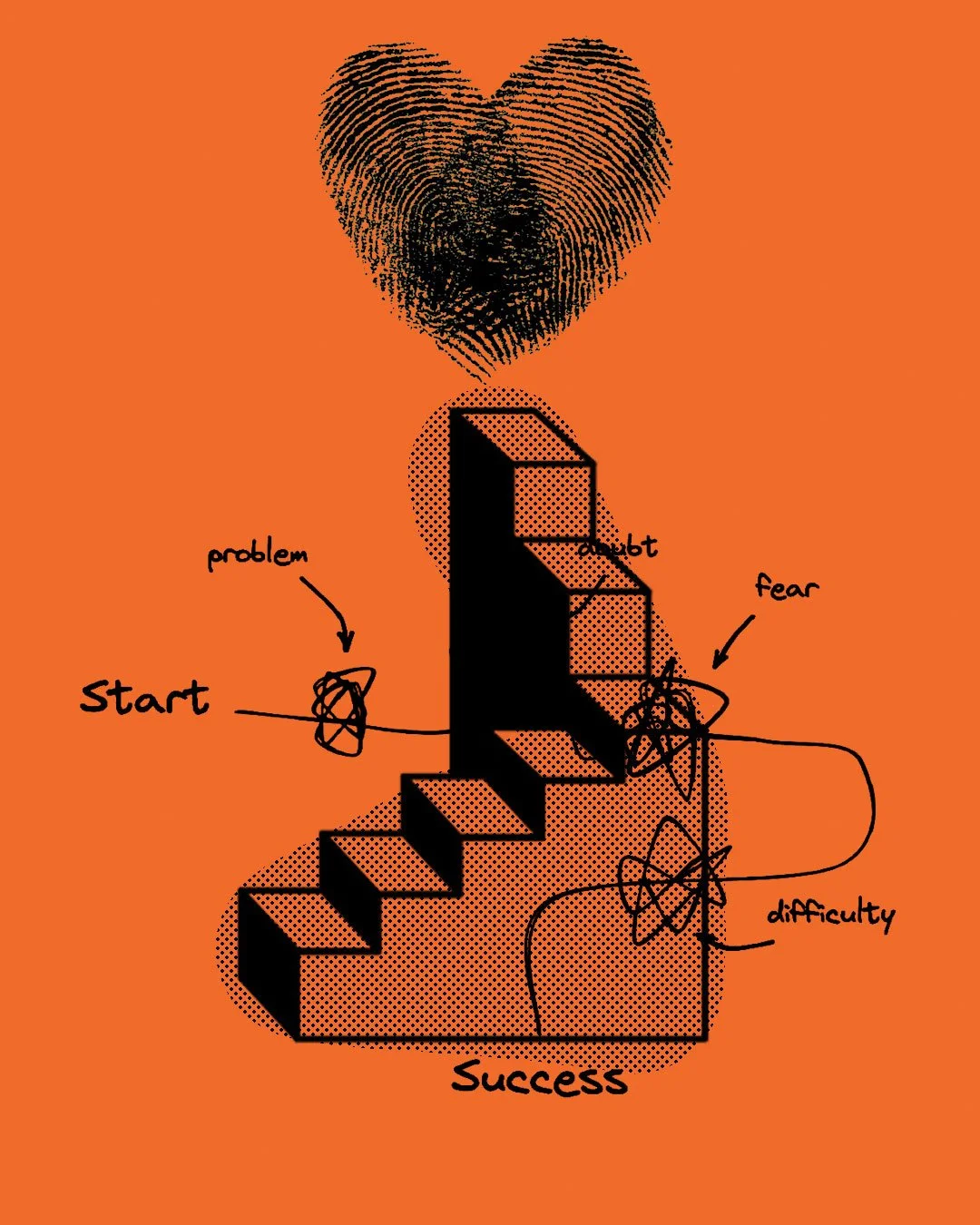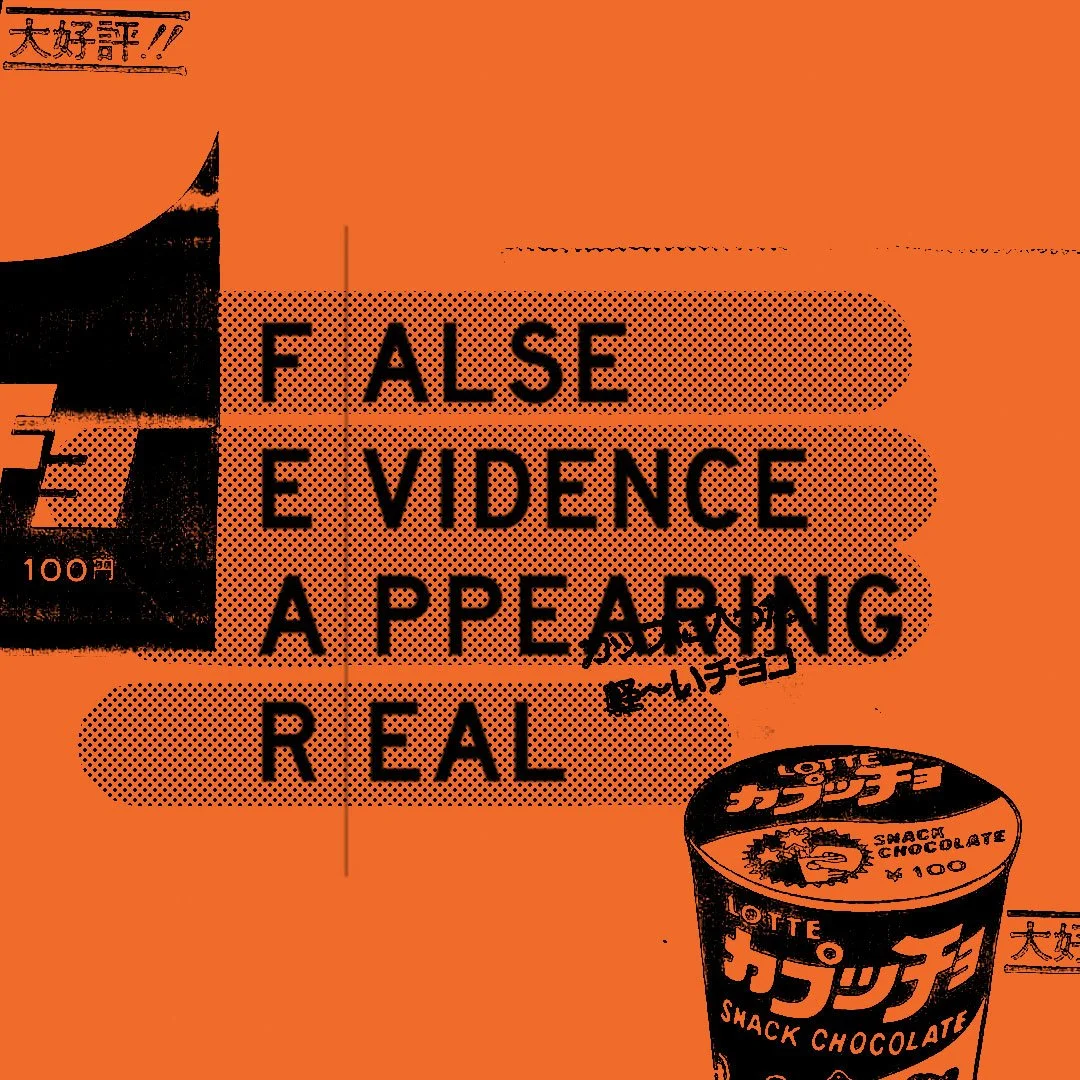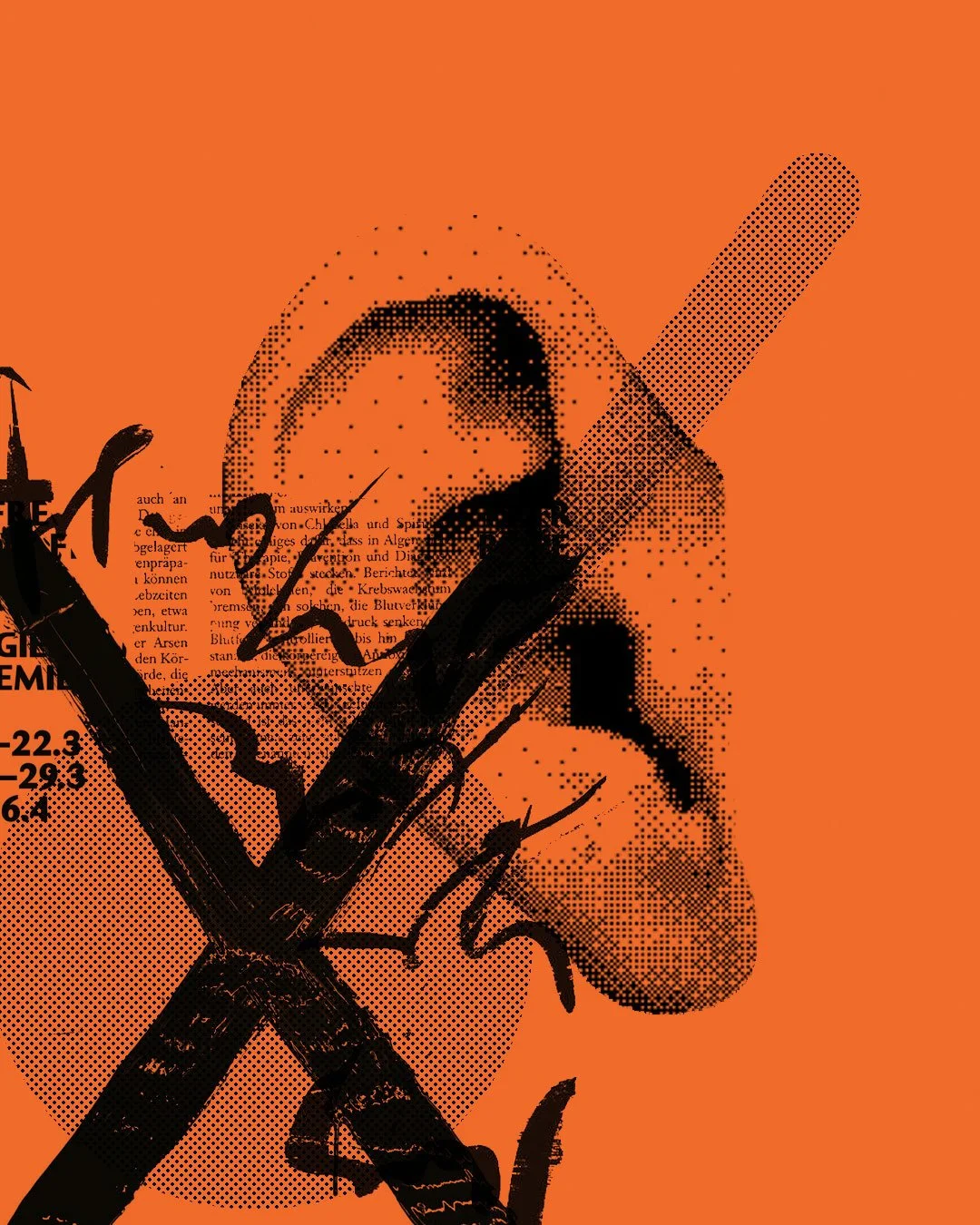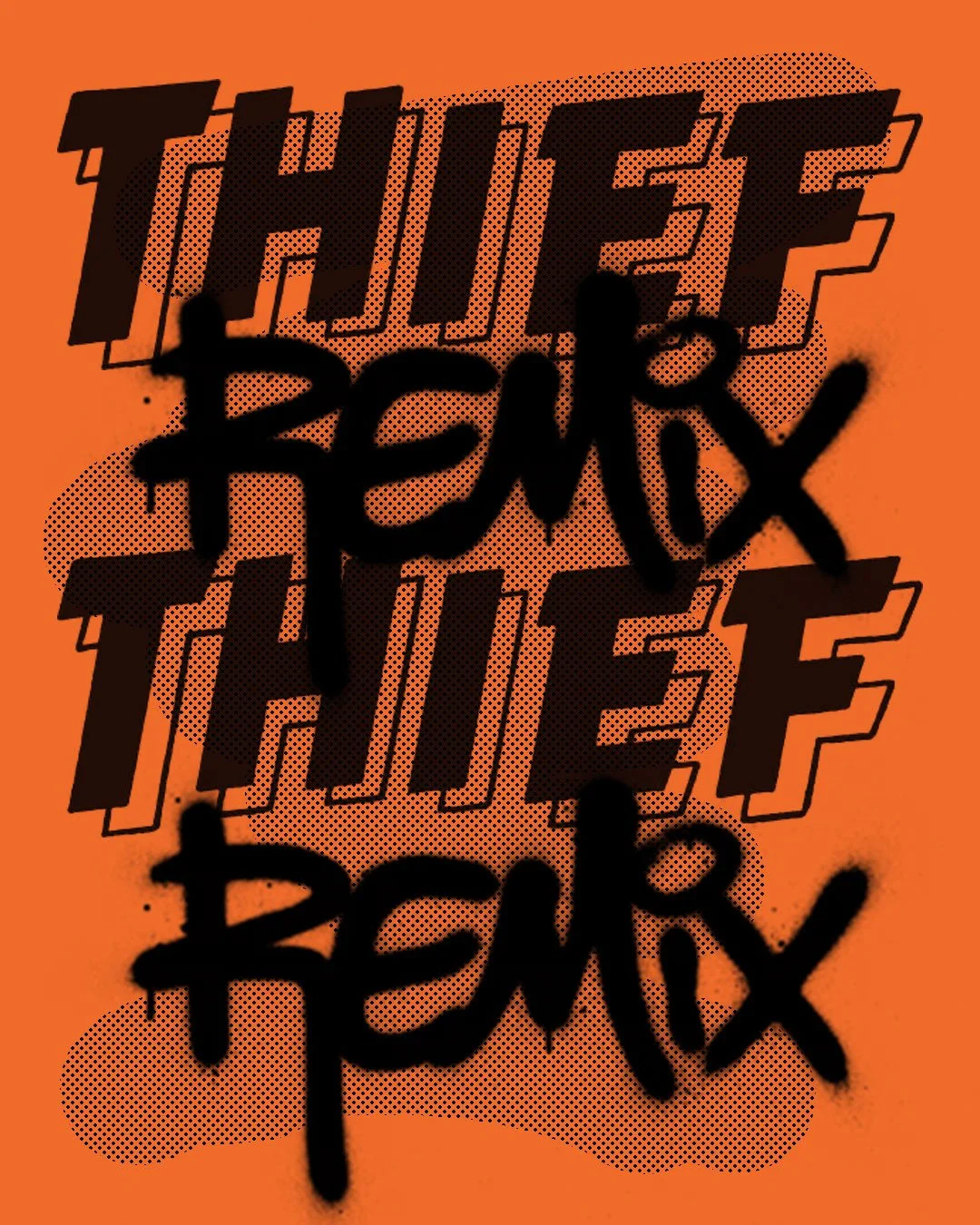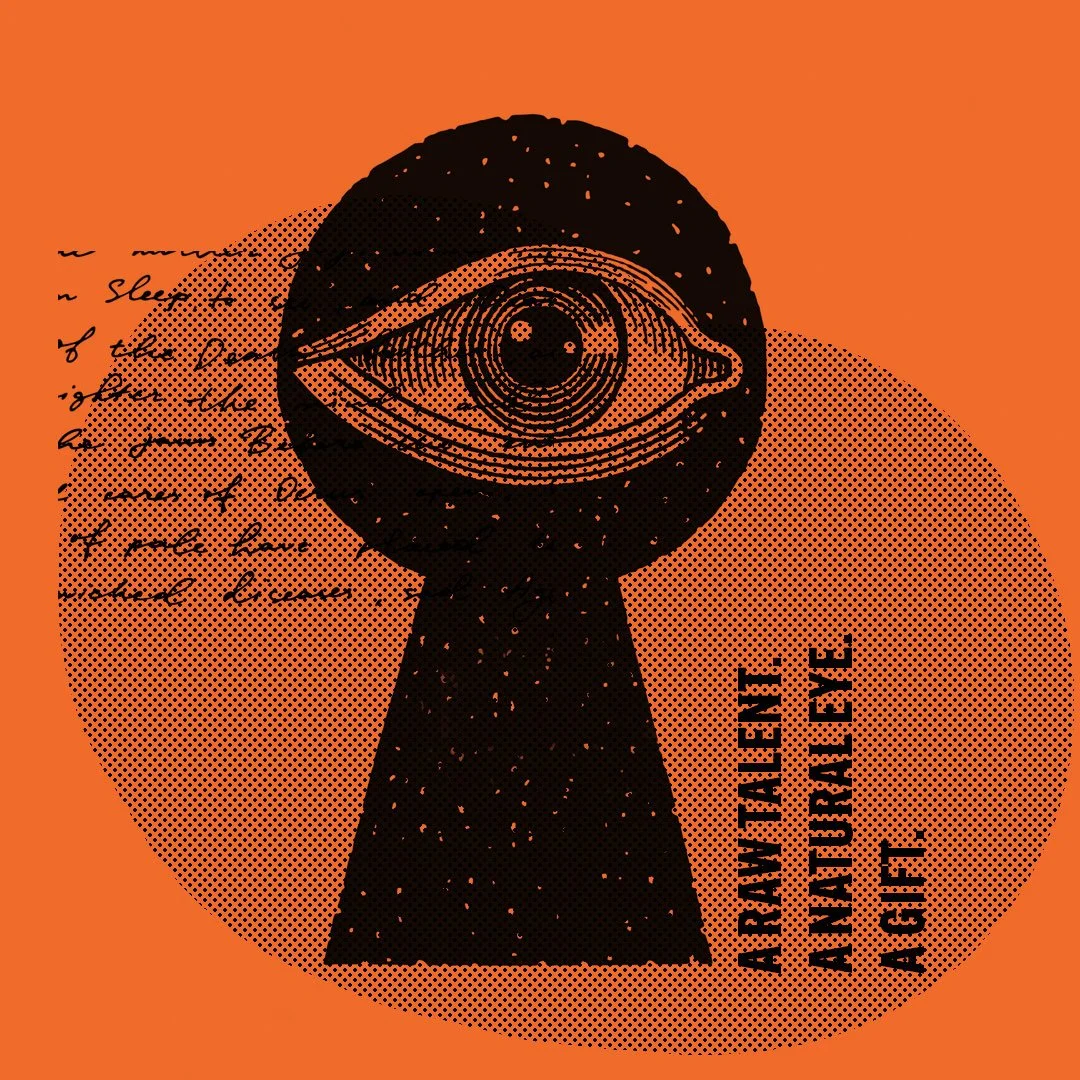Performative Branding in the Age of Scrutiny
Performance isn’t the problem. The problem is when the mask doesn’t hold. Audiences don’t just want the show...they want the truth behind it.
Once, “performative” was a neutral word. It lived in theatre, in language, in philosophy...about action as expression, words as performance, life as a kind of stage.
But in today’s cultural feed, “performative” has become a critique. It’s what we call out when someone does something for show, activism as a photo-op, allyship as a hashtag, sustainability as a campaign without the substance to back it up.
Audiences are sharper than they’ve ever been. They can spot the cracks between a brand’s persona and its actual practice. The “performance” no longer holds if it isn’t tethered to truth.
That doesn’t mean performance has no place in branding. In fact, performance is unavoidable...every post, campaign, or activation is staged in some way. The difference is whether the performance amplifies what’s real, or disguises what’s missing.
For brands, this is the new test: persona alignment. It’s not enough to look like the kind of brand that cares about climate, or equality, or craft. You have to be it, operationally and culturally, because the audience is watching from the front row nd they’re quick to call out the script.
“Audiences don’t just want the show...they want the truth behind it.”
The word “performative” has shifted into a kind of cultural warning label. When a brand wears the mask too thinly, the critique is instant. But when performance is paired with authenticity, theatre backed by substance...it can be powerful. Performance becomes more than a show. It becomes alignment in action.
Performative branding often reveals itself in the cracks — when what’s promised doesn’t match what’s practiced. Here are a few high-profile brands that have felt the sting of this critique.
Woolworths & Coles plastic bag bans (2018):
both supermarkets announced bans on single-use bags, but continued selling thicker plastic “reusable” bags. Many critics saw this as profit-driven and performative, not a genuine environmental step.
Qantas on climate: despite strong messaging about sustainability and carbon-neutral flying, climate groups have repeatedly challenged them for expanding flight routes and offsets seen as insufficient.
BP “Beyond Petroleum” rebrand (2000s–now): BP rebranded itself as environmentally progressive. The backlash: the Deepwater Horizon spill (2010) and continued fossil fuel expansion made the sustainability positioning look hollow — a classic case of performative branding.
Shapeshifting: From Myth to Modern Brand Strategy
Shapeshifting isn’t just a metaphor…it’s alive in the way brands adapt to shifting markets, platforms, and cultural moods. From heritage icons to digital disruptors, several Australian brands show how to flex and transform without ever losing their core identity.
In mythology and folklore, shapeshifting was a sign of power. To take on a new form was to gain new abilities...a wolf’s stealth, a bird’s freedom, a god’s disguise. It was always a little unnatural, often dangerous, and almost always fascinating.
Somewhere along the way, the word escaped the realm of fantasy and found its way into boardrooms, brand decks, and strategy sessions.
Today, shapeshifting doesn’t mean turning into a beast under the full moon...it means pressure-testing your strategy, flexing your identity, and anticipating the unexpected.
In product strategy, shapeshifting is the ability to step into the skin of your customer, your competitor, or even the culture itself. It’s scenario building with empathy. By shapeshifting, you can predict how others might move before you commit serious time and money.
In branding, shapeshifting has taken on a different, but related, form. A modern brand has to exist across dozens of platforms, each with its own language, tempo, and visual grammar. To shapeshift here is to adapt without losing yourself — to wear many faces while staying recognisable. A logo that breathes differently on TikTok than it does in a boardroom. A campaign that mutates across billboards, feeds, and stories, but still feels like the same voice.
“The word shapeshifting escaped the realm of fantasy and found its way into boardrooms, brand decks, and strategy sessions. ”
What’s striking is how the essence of the original meaning remains. Shapeshifting was never just about disguise...it was about survival, agility, and the ability to harness new power when the environment demanded it. Brands and strategies today are asked to do exactly that.
The folklore has become functional. The myth has become method. And shapeshifting, once a supernatural gift, is now a necessary skill for anyone navigating the ever-changing landscapes of culture and commerce.
Shapeshifting shows up in unexpected places. From heritage icons to digital disruptors, these brands reveal just how fluid identity can be.
Aesop
How they shapeshift: Globally recognised but still rooted in Melbourne origins, they shapeshift by designing every store uniquely to reflect its local context (no two stores look the same), while the products, tone of voice, and brand philosophy stay consistent. It’s an architectural, cultural shapeshift that still feels unmistakably “Aesop.”
Telstra
How they shapeshift: Once seen as a faceless telco, Telstra has been actively reshaping its brand to be more human-centric, flexible, and digital-first. They shift their voice between corporate responsibility (5G, rural connectivity) and lifestyle-driven campaigns (streaming, gaming, smart homes) while keeping connectivity at the centre.
Gucci
How they shapeshift: Under Alessandro Michele, Gucci leaned into maximalist surrealism; under Sabato De Sarno, it’s moving toward “quiet luxury.” The brand shapeshifts aesthetics and campaign style depending on cultural trends, while keeping its core codes (luxury, craftsmanship, heritage) intact.
Designing for Motion: Building Brands That Evolve
We don’t just look at design anymore. We live in it. We swipe, tap, remix, scroll, and share. Branding today isn’t just visual, it’s experiential.
There was a time when brand styleguides were gospel.
Fixed colours. Locked grids. A logo that never, ever moved. And for a long time that made alot of sense. Structure brought clarity. Consistency built trust. But the world of branding and the way we interact with brands has changed.
We don’t just look at design anymore. We live in it. We swipe, tap, remix, scroll, and share. Branding today isn’t just visual, it’s experiential. And static systems can’t keep pace with a dynamic world.
Over the past couple of years my studio has embraced this shift not being rebellious, but evolving. However, we shouldn't throw out the rulebook just yet, we should be rewriting it with relevance. Designing brands that are flexible enough to adapt, but strong enough to stay true.
“We don’t just look at design anymore. We live in it. We swipe, tap, remix, scroll, and share. ”
Dynamic branding isn’t about chaos. It’s about responsiveness. It’s designing for rhythm over repetition. Personality over perfection. Movement over memorisation. A modern brand should breathe...it should shift tone, respond to culture, flex between platforms, and still feel unmistakably itself.
To us, this isn’t a loss of control...it’s clarity in motion. It’s a new kind of consistency, one that’s defined not by sameness, but by essence.
As designers, our role has changed too. We’re not here to police the perimeter...we’re here to interpret the pulse. To build systems that grow. To create rules that are meant to guide, not restrict. Because when branding moves it stays alive and that’s where the real impact begins.
So, what is Dynamic, Flexible Branding?
Dynamic branding isn’t just a trend—it’s a mindset. It’s the idea that brands don’t have to look the same across every touchpoint, but they do need to feel the same. It’s less about rigid templates, and more about design systems that flex without breaking. It means building identities that are adaptable across different mediums, audiences, and cultural shifts—without losing their core character.
A dynamic brand:
• Moves with its audience, not just above them
• Uses motion, interaction, and content to stay fresh
• Holds emotional consistency, even as its visuals flex
• Prioritises adaptability over repetition
Beyond the Scroll: Finding Feeling in a World of Sameness.
Pure originality doesn’t start with moodboards or mockups. It starts in a much quieter place. Every project I’ve ever felt proud of began with a conversation.
Some days, I feel like I’m watching the Matrix. Pinterest, Canva, Behance, Instagram…design is everywhere, all at once. Inspiration is fed to us before we even know we’re hungry.
We scroll. We save. We like. Repeat.
And while that flood of visual input has its moments, it also comes with a strange side effect: exhaustion, paralysation. Like design has already been done. Like there’s nothing left to say.
“Every project I’ve ever felt proud of began with a conversation. A tension. A single detail someone thought no one noticed. It builds slowly, carefully…until something deeper begins to emerge.”
If you’re a designer, or even a client working in branding and design, you’ve probably felt it too…that creeping sense that originality is out of reach. That everything looks the same. That someone, somewhere, must’ve already done it better.
And here’s the truth…they probably have. At least, on the surface. But good design has never really lived in the surface.
Pure originality doesn’t start with moodboards or mockups. It starts in a much quieter place. Every project I’ve ever felt proud of began with a conversation. A tension. A single detail someone thought no one noticed. It builds slowly, carefully…until something deeper begins to emerge.
A feeling. A story. A presence.
That’s where design lives. Not in the perfection of the output, but in the intent.
As a designers I often say that great design isn’t about what’s added…it’s about what’s revealed. My role is to go beneath the baseline. To move past what looks “on trend” and ask: What does this brand actually want to feel like in the world? What friction does it hold? What edge does it walk?
Because that’s the part that no one else can replicate. That’s where the originality lives. Not in fonts or colour palettes, but in meaning.
So yes, you could fall into a heap of imposter syndrome.
Or…you could stop scrolling. Start listening. And remember why you started designing in the first place.
Because design isn't exhausted.
It’s just waiting for you to go deeper.
The Non-Fungible Token Fade: Reflecting on the NFT Phenomenon
As designers and innovators, it's our responsibility to learn from these early experiments such at NFT’s and heres my thoughts.
A few years ago, I found myself captivated by the burgeoning world of NFTs. As a designer, the concept of digital assets intertwining with tangible experiences sounded pretty cool. The idea that purchasing a digital token could grant access to exclusive fashion pieces or events felt like the future knocking on our doors.
One standout example was Dolce & Gabbana's "Collezione Genesi," a groundbreaking NFT collection that blended digital artistry with physical couture. Buyers didn't just acquire a digital image...they received bespoke garments and exclusive experiences, bridging the gap between the virtual and the real.
Similarly, the Bored Ape Yacht Club (BAYC) went litraly crazy. Owning one of these unique ape illustrations wasn't just about the art... it was a ticket into an exclusive community, offering perks ranging from virtual events to real-world gatherings.
This NFT world fusing art, identity, and community was unlike anything I'd seen before.
But as quickly as the hype surged, it seemed to die. The vibrant discussions, the skyrocketing sales, the media frenzy...all began to fade. The digital marketplaces that once buzzed with activity grew quieter, and many of the promised utilities remained unfulfilled.
So, what happened?
Perhaps the rapid ascent was unsustainable. The novelty of NFTs captured our imagination, but the infrastructure and long-term vision lagged. Many NFT creators prioritised quick gains over lasting value, leading to skepticism and fatigue among consumers and creators.
“As designers and innovators, it’s our responsibility to learn from these early experiments.”
Yet, I believe the core idea still a winner. The integration of digital assets with real-world experiences isn't inherently flawed. It's a concept that, if executed with authenticity and purpose, can redefine how we interact with fashion, art, and community.
As designers and innovators, it's our responsibility to learn from these early experiments. To move beyond the hype and focus on creating meaningful, sustainable experiences that resonate on both digital and physical planes.
The dream isn't dead; it's just in need of thoughtful reinvention.
So this got me thinking what could this look like for today? And I think brands especially in fashion, design, and lifestyle, can meaningfully merge digital and physical worlds.
Design for Identity, Not Just Ownership. A digital token isn’t just a receipt. It’s identity. Brands could design NFTs that evolve with the user... collectibles that reflect real-life interactions, tastes, or even milestones. Like a digital badge of belonging, but beautifully designed and personal.
Anchor Digital to Tangible Craft. The most successful fashion NFTs weren’t purely digital, they included access to physical couture, fittings, or experiences. The token wasn't the end product...it was the key to a deeper brand moment.
Move from Scarcity to Storytelling. Scarcity was the first pitch “only 100 made!” but the future is in narrative. NFTs can unlock brand worlds, layered storylines, behind-the-scenes content, or exclusive artist collaborations. Think less status symbol, more ongoing connection.
4. Focus on Utility with Emotion. NFT space got obsessed with “utility” (free tickets, VIP access), but too often it felt transactional. The brands that win next will build emotionally intelligent systems, where the digital layer enhances the feeling of being part of something.
Make It Invisible (Almost). When it works well, it shouldn’t feel like “NFT tech.” It should just feel like brand magic. The interface, the jargon, the blockchain talk—it can all be hidden. The experience should lead, not the tech.
So where to from here?
I don’t think NFTs are gone. I think the hype burned too hot, too fast. What’s left is a quieter, more thoughtful opportunity—a design challenge, really. How do we make digital assets that aren’t just collectibles, but bridges…between brands and people, between digital and real life, between identity and expression?
And for me that space feels way cooler.
Polyworking and the New Creative Economy
A term you may have heard of...you may even being doing it without realising.
“Polyworking isn’t a trend...it’s the new normal for creative lives.”
Polyworking. A term you may have heard of...you may even being doing it without realising.
So what is it? It's a growing trend of people, particularly the younger generation, juggling multiple roles and income streams, simultaneously.
It’s more than freelancing or side hustling, it’s a structural shift in the way we work, create and define success.
Whats driving Polyworking?
• A need for work flexibility.
• Easy access to working digitally.
• Diversification of income streams.
• The pursuit of passion projects.
• Rejecting the "one job for life" model.
People aren’t a job title anymore. They’re designers and Artists. Strategists and writers. Creatives and coders. Polyworking embraces the layered modern creative ambition.
Gone are the days when working full-time at one agency was the only pathway to success.
Designers today are splitting time between branding studios and freelance.
Creative directors are consulting on strategy and also building personal brands.
UX designers are developing products on the side.
Copywriters writing for brands by day and are publishing self help ebooks on Etsy by night.
The industry is changing, were studios are beginning to accept that the best talent may not want to be locked in five days a week. They’re learning to collaborate with creatives and freelances who bring more than just design skills, people with vision, networks, and their own creative edge.
But is Polyworking too good to be true?
It can certainly create some real challenges like such as; Burnout from juggling too much. Creative dilution when spread too thin. Conflicts of interest or loyalty?
Still, the opportunities are hard to ignore as Polyworking gives creatives; Ownership of their time. Broader exposure to different styles and teams. A greater sense of autonomy and authorship
So here’s my take: Polyworking isn’t a trend...it’s the new normal for creative lives. Design and advertising professionals shoudl view it as an advantage. The industry’s most exciting ideas are coming from those willing to blur the lines, cross disciplines, and follow curiosity wherever it leads.
A Joy(conomy) Division: Finding Light in a Saturated World
Welcome to the Joy(conomy). Where design meets delight and only works when it’s earned..
There’s a strange, beautiful tension happening in branding right now. On one hand, we’re living through a crisis-rich, algorithm-heavy, burnout-ridden culture. On the other hand, brands are starting to embrace joy. Not as an escape, but as strategy and identity. I bit like a new emotional currency.
Welcome to the Joy(conomy).
The Joy(conomy) is where design meets delight.
Where tone is light without being fluffy.
Where optimism isn’t naive...it’s necessary.
And where brands are finally allowing themselves to show emotion, play, colour and even absurdity.
Think less noise, more nuance.
Less perfection, more presence.
But here’s the division! Not every brand can or should join the parade. The temptation to go full dopamine, saturated colour and bubble type is not it. Joy isn’t a filter. It’s a feeling. And just like with irony or wit, it only works when it’s earned.
So the Joy(conomy) Division is this...!
How do we tap into joy without faking it?
How do we design for optimism when the world still feels heavy?
How do we make people feel better without glossing over what’s real?
It starts by being specific. Finding small truths. Injecting personality. Creating tone that feel human again. Joy doesn’t mean happy, it means resonant.
And for brands it builds a world that people want to return too.
The Art of Not Noticing- When Wayfinding and Placemaking Just Work
There’s a curious thing that happens when wayfinding is done well…you don’t notice it. You simply move without second guessing, without hesitation.
I keep having this dream.
I’m in a building that feels oddly familiar…part hotel, part memory. It reminds me of a place. The carpets are patterned, the walls hum with fluorescent nostalgia, and there’s a smell I can’t quite place. I move between floors, but nothing’s quite clear. Corridors loop, staircases twist like something out of an M. C. Escher drawing, always leading somewhere, but never quite arriving.
It’s not scary. Just endless. Like I’m navigating a space with no beginning or end.
I think about that dream often. Especially when working through a project where wayfinding and placemaking intersect. Because what that dream really reveals is how deeply we rely on space to make sense. And how unsettling it is when it doesn’t.
There’s a curious thing that happens when wayfinding is done well…you don’t notice it. You simply move without second guessing, without hesitation. You flow. And in that flow, there’s comfort. Clarity. Even beauty.
As a designer, I’ve always been fascinated by this idea of the “unseen hand”, the invisible cues that guide us through space. Signs, materials, light, texture, contrast, flow. All of these working together to tell you where you are, where to go next, and how to feel while doing so. You may never stop to admire them, but they shape your entire experience. That’s the art of it.
Placemaking, on the other hand, is not just about direction…it’s about definition. As a designers I personally don’t see placemaking as adding signs to a finished space. It starts earlier. Much earlier. It's about embedding meaning into the bones of a place. Listening to the site, the story, the people, the architects, the interior designers. Finding what’s already there, then building upon it with intent.
A designers role often feels more like storytelling than design. Not just crafting aesthetics; creating experiences that people instinctively connect with. When it’s done right, it just feels right…as if it was always meant to be that way.
What people often take for granted “I just found my way” or “I love how this space feels” is actually the result of hundreds of decisions. Fonts chosen for legibility at distance. Materials that catch light at the right hour. Hierarchies that whisper, not shout. Details that teams agonise over, so that others don’t have to.
“There’s a curious thing that happens when wayfinding is done well…you don’t notice it.”
The new world order is defined by richer human interaction, and a greater focus on wellness, sustainability, and community. Our environments must do more than function; they must feel. As cities evolve, so should the way we think about navigating them. Wayfinding becomes an invitation, not an instruction. And placemaking? A cultural contribution, not just a backdrop.
So much of what I do is about creating the conditions for connection, between people, places, and stories. Sometimes that’s a bold gesture. Sometimes it’s just the right texture underfoot.
And when we get it right, you’ll never think about it.
You’ll just arrive.
When the Product Is the Brand: Has Luxury Said All It Needs To?
In a culture that values connection, energy, distinctiveness...can luxury afford to stay silent?
There’s something fascinating happening in the world of luxury branding for a while now. Fashion houses, high-end jewellery, designer furniture...take a look and through their campaigns and you’ll see it...minimal type, one commanding image, restrained palette, confident silence. It’s beautiful, yes. But also, familiar.
So familiar that sometimes you forget what you are looking at...until you see a logo in the corner.
But maybe that’s the point.
Maybe these brands have reached a level where the product is the brand. A chair by B&B Italia. A bag by Bottega. A bracelet by Cartier. You know it before the logo shows up. Form, silhouette, texture, detail...it all speaks for itself. The object holds the identity. The design carries the voice.
That kind of recognition is the a dream, right?
To build something so iconic it doesn’t need to shout.
To design products so strong, the branding just gets out of the way.
“In a culture that values connection, energy, distinctiveness...can luxury afford to stay silent?”
And maybe that’s why so many high-end brands look alike. The restraint isn’t laziness...it’s confidence.
But here’s the tension...Is that enough in today’s world?
In a culture that values connection, energy, distinctiveness...can luxury afford to stay silent?
We’re seeing a shift. Younger audiences want more than heritage...they want meaning. They want movement. They want to understand what a brand stands for beyond the object. And in a sea of elegant sameness, the brands that show personality...even subtly—stand out.
Good examples of the shift is by Gucci. Were they are creating dramatic cinematic beauty called 'Where Light Finds Us' for their Spring/Summer Campaign, by the Artistic Director Riccardo Zanola, The campaign synopsis is, where light becomes a living presence and inspires the courage to be authentic even in the most fragile and fleeting moments.
Another one by Gucci is called Lido Campaign, staring Daisy Edgar-Jones, David Jonsson, and Aliocha Schneider in a living tableau as friends gather by the sea, where time stretches and the usual pace of life gives way to something grounded, yet full of possibility again by the Artistic Director Riccardo Zanola
Still luxury, but different.
So where’s the line?
Maybe it’s about balance.
Letting the product lead, but building a world around it.
Not overbranding, but not under-expressing either.
My take…Great design may speak for itself…but a great brand gives it something to say.
Are Content Journeys Still Current? What’s Next for Lead Journeys?
The traditional lead journey...awareness, consideration, conversion...feels increasingly out of sync with how people actually behave.
We’ve all mapped them. The funnel. Content Pathways. Engagement Funnels. Content Workflow.
The journey from first touch to final conversion. For years, content strategies have been built around nurturing leads step-by-step, guiding users from awareness to action with logic, structure and clear intent that are generally automated EDM's.
But here’s the truth...audiences don’t move in straight lines anymore.
The traditional lead journey...awareness, consideration, conversion...feels increasingly out of sync with how people actually behave. Instead of methodical movement, we’re seeing fragmented, emotionally driven, algorithm-influenced chaos. Audiences jump in and out. They lurk. They binge. They convert on a whim or ghost you forever.
So, are content journeys still current?
“What’s next is something more fluid, more responsive, more human. Think modular journeys. ”
The idea of mapping experience still matters, big-time. But rigid funnels are fading. What’s next is something more fluid, more responsive, more human. Think modular journeys. Think nonlinear engagement. Think design systems for behaviour, think mosaic's of content, not just 1-2-3 stages.
What does that mean practically?
Personalised entry points. Let people start where they are, not where you think they should be.
Content that’s contextual, not just chronological. One size doesn’t fit all and sequencing shouldn’t either.
Emotional data, not just behavioural. Why they click matters as much as when.
Brand as an ecosystem, not a pipeline. Every piece of content is a touchpoint, not a step.
Teams/Sales teams should be able to intervene the content journey at strategic points to get closer quicker.
Content Journey's can't be a straight road and that means brands need to not "design for the journey" instead "design for the moment".
‘Content Journey 2.0’ is the new buzz word :)
Designing with Data…Not for It
We’re surrounded by performance dashboards and metrics and while these tools are useful...they can also lead us into creative autopilot.
We all know data can be powerful and if you know how to use it, it can show us all kinds of things, like patterns, uncovering behaviours and can help us understand what’s working. It sharpens decisions. Validates instincts. Offers perspective. But as someone deeply involved in design, branding and advertising...I’ve learned it’s only a part of the whole story.
We’re surrounded by performance dashboards, metrics, engagement scores, A/B tests, and monthly audits. And while these tools are useful...they can also lead us into creative autopilot.
A colour “performs better.” A layout gets “more clicks.” A certain post has “more reach.” So we follow the numbers. We optimise. We repeat.
But here’s the nuance...
Optimisation doesn’t always equal memorability.
And high engagement doesn’t always build long-term brand connection.
Often, we’ll draw conclusions based on a handful of metrics. A visual may have “underperformed,” but maybe it carried the strongest brand voice. A post may have gone viral, but was it realatable to the target market?
That doesn’t mean the data is wrong. It just means we need to view it alongside instinct, context, and creativity.
There’s value in mixing it up.
We shouldn’t design against data...but we also shouldn’t design for it, exclusively. Great brands have never relied on perfect metrics to define their path. They’ve been guided by clarity, originality, and the courage to experiment. Some of the most iconic campaigns in history would’ve failed a modern test—too bold, too quiet, too abstract. But they cut through.
Data helps us see what’s happening.
Design helps us imagine what could.
The opportunity is to blend both...using data to sense-check, not straightjacket.
To identify trends, then respond with craft.
To understand audience behaviour, but not let it dictate personality.
Because if everything is shaped by the same set of rules, nothing stands out.
For myself, I am always look at performance...but I continually ask...Are we building memory? Are we deepening connection? Are we still saying something that feels true?
If the answer is yes, it’s okay to have a post underperform.
It’s okay to test something different.
Because branding isn’t just about what happens in the moment.
It’s about what stays with people after it.
My top 10 thoughts on how to design with data.
Use data as a guide, not a gospel.
Let it inform your creative, but not dominate it. Sometimes the best ideas aren’t immediate hits—they’re slow burns.
Know which metric matters.
A click, a like, and a conversion all mean different things. Define success before you analyse it.
Mix intuition with insight.
Trust your eye. Trust the story. Data is reactive…your creative thinking can be proactive.
Protect the brand voice.
Don’t dilute your identity just to perform better in the short term. Recognition comes from repetition and clarity over time.
Create space to experiment.
Not every design or message needs to “win.” Some just need to explore. That’s where innovation lives.
The Art of Earning It
There’s immense value in climbing from the gutter to the top. That journey, gives you character that no instant promotion could ever offer.
Everyone’s creative path is unique. Some step straight into freelance freedom; others carve out spaces in niche branding studios. But many of us, myself included, earned our stripes in the pressure cooker world of the ad agency.
My journey began at DDB Needham. And I mean literally at the bottom. My days started in the gutter, doing finished art and often ending with frantic drives delivering press ads moments before deadline. That hustle was real. Every step upwards...S$%t Kicker, Graphic Designer, Art Director, then eventually becoming a Creative Director and a Shareholder. It was hard earned.
Yet, I wouldn't trade that experience for anything.
Advertising taught me things no textbook or quick online tutorial could...resilience, discipline, presenting under pressure, communicating complex ideas clearly, and managing timesheets like second nature. More importantly, it taught me humility and hustle qualities that have become the foundation of my career.
Today, our industry is evolving. Small studios, independent collectives, and freelancers dominate the landscape. Without traditional agency hierarchies, how do you know when you’ve "made it"? Do you reward yourself a new title after clocking the hours? Or do you start at the top and learn along the way?
“There’s immense value in climbing from the gutter to the top. That journey, gives you character that no instant promotion could ever offer”
The truth is, there's no shortcut to experience. Promotions and titles come easy, but the real KPI isn’t a fancy job title...it's what you’ve learned from being tested by tight briefs, demanding clients, impossible deadlines, and seasoned mentors.
Whether you choose the agency route, branding studio, digital shop, or independent freelance life, my advice stays the same...suck it all up. Say 'yes' to difficult projects. Embrace the grind. Because the pressure, the chaos, the constant challenge...they shape not just your skillset, but your entire creative perspective.
There’s immense value in climbing from the gutter to the top. That journey, gives you character that no instant promotion could ever offer.
Embrace it. You won’t regret it.
Are We Changing Faster Than We Can Handle?
Is the rate of change outpacing our capacity to adapt to it? Are we evolving...or just scrambling to keep up?
There’s this quiet tension I keep coming back to...personally, creatively, even socially.
Is the rate of change outpacing our capacity to adapt to it?
Are we evolving...or just scrambling to keep up?
The world we grew up in (Generation X + Millennials) is not the world we now live in.
And I’m not talking about nostalgia. I’m talking about infrastructure. Culture. Work. Time. The speed at which everything now shifts. The constant updates, the endless scroll, the always on pressure to pivot, absorb, respond, reinvent.
It’s thrilling, sure. But also...are we coping?
Because it’s starting to feel like the human part of all of this is lagging. Like we were built for slower systems. Longer loops. More context. And now we’re being asked to function in environments that are rewriting themselves by the day.
In branding and design, I see it clearly.
There's less room for pause, more demand for reaction.
But it’s bigger than work.
Across multiple domains...mental health is a biggie, physical wellbeing, social cohesion, we’re seeing signs of strain. We’re sleeping less. Moving less. Thinking in fragments. Even the way we relate to each other is shifting...texts instead of calls, reactions instead of conversations.
“There’s less room for pause, more demand for reaction.”
So, is it making us sick?
Maybe not in the traditional sense. But something is off.
And it’s worth asking...just because we can keep up, does that mean we should?
I don’t have the answers. But I do think the most powerful thing we can do right now is pause. Reflect. Reconsider what it means to create, work, and live in a world that never stops changing.
Six Ways to Reclaim Rhythm
For creatives, brands, and anyone feeling the speed fatigue.
001
Reset Your Inputs
If your feeds feel like noise, unfollow. Seek out unexpected inspiration, slower formats (books, documentaries).
002
Make Space for Stillness
Block time for boredom. Walk without your phone. Step away from the scroll. Have a pause between beats.
003
Go Deep, Not Wide
Instead of chasing five ideas, give one idea the space it deserves. Explore it. Stretch it. Build depth. It will always be better.
004
Work in Seasons, Not Sprints
Creativity thrives in cycles. Instead of constant pressure, try project waves - exploration → creation → pause. The best work needs marination.
005
Reconnect to Why
When speed takes over, we often forget what we’re actually building. Step back. Re-read your strategy. Revisit your brand’s origin story and re confirm.
006
Create Before You Consume
Start your day with output, not input. Write, sketch, stretch, get the morning suns rays before you check emails or socials. Even 15 minutes can shift mindset from reactive to intentional.
A Brand Is Greater Than the Sum of Its Parts
A great brand isn’t one thing...it’s the orchestration of many things. Thoughtfully shaped. Purposefully connected. Built over time, not in isolation.
We often talk about branding as a logo. A colour palette. A typeface.
But those are just the surface layers.
A great brand isn’t one thing...it’s the orchestration of many things. Thoughtfully shaped. Purposefully connected. Built over time, not in isolation.
So what happens when you forget that?
When the logo’s perfect but the tone doesn’t fit?
When the website’s beautiful but visual language feels generic?
When the work’s all there, but the story's nowhere?
A brand is greater than the sum of its parts. In the way strategy becomes design. In how design shapes language. In how language becomes behaviour.
I always say "A brand is actually born in the spaces between the parts...not in the parts themselves and that’s where the real identity lives."
No single element can carry a brand on its own. But together...when built with clarity and intention, they become something more...
A system. A presence. A universe.
The Eight Parts of Branding
Here are The Eight Parts of Branding...my go-to reference points for building a brand with depth, personality, and purpose. Use them as your foundation to do your thing :)
001
The Foundation
The purpose, the reason, the clarity behind the brand. What does it stand for? What does it stand against? This is the bedrock. No brand survives without it.
002
The Mood
The emotional atmosphere. The aesthetic direction. The tone before the words. This is where instinct and intent collide...often shaped by mood boards, materiality, or early experiments.
003
The Voice
How a brand speaks. Not just in copy, but in rhythm, point of view, and tone. Human, refined, playful, assertive voice is what people hear when the logo’s not in front of them.
004
The Mark
The logo, logotype, symbol or signature. It’s not the brand, but it’s often the doorway into it. It needs to be recognisable, scalable, and quietly ownable.
005
The Visual System
Type, colour, grid, layout, motion, photography. These are the tools that give structure and energy to the brand in use. A good system is flexible. A great one is alive.
006
The Story
The narrative that threads it all together. Where did the brand come from? What future is it building? This is how meaning and emotion become memory.
007
The Application
Where the brand shows up in the world. Packaging, signage, campaigns, digital, spatial. This is where strategy turns into expression—and inconsistency gets revealed.
008
The Experience
The layer most people never name, but always feel. It’s the tone of service, the pace of interaction, the feeling someone walks away with. It’s where the brand proves itself in the real world.
Off-Brand: When Obsession Becomes Distraction
Creating your own personal style guide. Not just how you dress. But how you decide.
My mind is a constant scroll of ideas. Some urgent, some fleeting, some obsessive. I’ll fixate on something until the next idea sweeps in and replaces it.
A current obsession...the rabbit warren of limited edition drops. KAWS, Cactus Jack, Nike x Off-White. The thrill of the hunt. At first it was about the design and what I loved. But then...something shifted.
I started chasing what might go up in value, not what I genuinely valued myself. I found myself filtering choices through resale predictions, not personal taste. My eye for design was being replaced by an eye for investment.
And don’t get me wrong...there’s nothing wrong with that. But something felt off. I was no longer choosing from a place of passion, but from a place of perceived return.
I was going off-brand.
Not in the aesthetic sense. In the personal sense. The version of me obsessed with the energy behind design was being drowned out by hype and metrics.
And that got me thinking...if I’m so meticulous about crafting brands with thier own vision, values, tone...should I be doing the same for myself?
“I wanted to create my own personal style guide. Not just how I dress. But how I decide.”
Creating my own personal style guide.
Not just how I dress. But how I decide.
A framework. A filter. A manifesto.
What I say yes too.
What aligns with my values.
What makes me feel something.
What adds depth, not just noise.
I am definetly not the first to think of this, but it sounded interesting and we do it for brands all the time. Creating systems to stop them from getting lost.
And so...another project begins.
Not for profit. Not for resale. Not for anyone else.
Sounds stupid, but just for me.
Living on-brand.
This May or May Not Be Real
The line between the real and the generated is dissolving and with it “Trust”
It’s 3:12am in a Tokyo alleyway. A single vending machine glows blue against the wet concrete. A woman in a red coat lights a cigarette under a flickering sign. No one else in sight. Suddenly, the vending machine powers down with a snap. The light dies. The alley goes pitch black. Her cigarette is the only thing still burning.
But here’s the thing...none of it happened.
Or maybe it did.
That’s the problem.
In a world starving for authenticity, we’re being served a never ending stream of curated moments, polished captions, and now...AI generated everything.
Words, images, voices. All beautifully produced. All plausible. But who made them? And why? The line between the real and the generated is dissolving and with it...trust.
This isn’t a rejection of AI...it’s a reckoning. A reminder that intent matters. That authorship gives work weight. Behind every photo, phrase or project, someone either cared...or didn’t. And we can feel the difference, even if we can’t explain it.
Jean-Paul Sartre once said, “If you seek authenticity for authenticity’s sake you are no longer authentic.”
“If you seek authenticity for authenticity’s sake you are no longer authentic.”
I don't know about you, but I think we dont need any more brands saying the same thing...we need more brands that actually mean what they say.
So what’s real?
Maybe a better question is...what still feels honest enough to believe?
Ouch.
The Brand Was Speaking Before We Were Ready to Listen
There’s a strange moment in any creative process when the thing you’re shaping begins to shape you back.
There’s a strange moment in any creative process when the thing you’re shaping begins to shape you back.
In the creation of a new brand or campaign, this happens when a voice emerges...not just as a tone, headline or tagline, but as a way of thinking. Suddenly your colleague starts making the brand sound like themselves, the strategy becomes vocabulary, form begins to feel like emotion, and with all those voices flying around, you realise...the brand is now telling you how to build it.
Lately, we’ve felt a similar shift when working with generative tools...not as shortcuts, but as ways to listen. Prompting language, visuals, and behaviours. In the early stages of brand work, we’re not always sure where it’s going, but we’re listening. Seeing where the edges are. Sometimes the output is meaningless. Sometimes it drops a loose insight. And once in a while, it reflects something we haven’t yet been able to say ourselves.
“There’s a strange moment in any creative process when the thing you’re shaping begins to shape you back.”
These tools aren’t the answer...but they’re a useful sparring partner. Insights that work into original human crafted bliss.
The goal isn’t speed, but resonance as meaning sometimes hides in a misaligned words or a strange shapes we almost skipped past.
That’s the moment we pause. We listen.
And just like that...the brand begins to speak.
Made You Look, Made You Steal.
TikTok & the world of stolen content or is this now called a remix?
TikTok lives in the remix. Sounds, memes, voiceovers, looped video, layered, reinterpreted, random.
Is that a part of its power? It’s built on shared language. A wink here. A re-edit there. One trend creates another and the result is a vibrant, fast moving creative culture where nothing is original, and everything is.
But here’s the tension for me....when does a remix become a complete ripoff?
Were is the gray zone?
On one side you’ve got creators building on a moment, giving credit, adding value, collaborating.
On the other side, full-on theft...ideas lifted wholesale, aesthetics copied, captions and concepts cloned without attribution.
The tricky bit with all this, is it all looks the same and who would know as TikTok’s algorithm doesn’t really care who made it first, it cares about who made it perform. Originality gets outrun by optimisation. And small original creators often get left behind as others thrive from what they started.
It made me think...This isn’t a content problem. It’s a culture problem.
“The tension for me is when does a remix become a complete ripoff?”
If everything becomes remixable, do we lose track of authorship entirely? Or is this just the next evolution of creativity?...Where ownership is less about who did it first, and more about who does it best?
It’s not black and white. But maybe that’s the point.
Barcelona and the Reminder to Celebrate the Makers
It’s a city where art and culture aren’t just appreciated...they are solidly baked into the culture.
When travelling there are always places that stay with you...but few have ignited me like Barcelona.
It’s a city where art and culture aren’t just appreciated...they are solidly baked into the culture. From the moment you arrive, there is something in the air that you just feel. On the buildings, in the streets, in the people. Art isn't contained in galleries here...it spills throughout the city.
A simple walk can introduce you to all the greats from Gaudí, Picasso, Miró and Dali. Suddenly you realise an artist isn’t an afterthought. Their names are spoken everyday. Their contributions respected, remembered and celebrated.
This made me think...how often do we forget the names behind design today?
In a world full of fast creative, anonymous brandmarks and designer products, the creator can easily disappear. The product is praised. The branding launches smoothly. The object gets sold. But the mind behind it is often unseen.
That’s what Barcelona highlighed for me...design deserves authorship. The architect. The designer. The craftsperson. The stylist. The typographer. The creative director.
We should know their names and we should embed them into the narrative.
“A simple walk can introduce you to all the greats from Gaudí, Picasso, Miró & Dali.”
Yeh, you could say, they got paid for doing their job, however design sometimes isn’t just an output, it’s voice, it’s vision, it’s risk. And to respect design (particulary in this day and age), we have to respect the people behind it.
That’s the real cultural shift...celebrate them.
Creativity Isn’t a Gift. It’s a Lens You Learn to Sharpen.
We all start somewhere. Most of the time, that “somewhere” is kind of shit.
Do you think creativity is something you’re just born with?
Maybe some of us start out seeing the world a bit differently. Picking up on patterns, colours, a sharper sense of observation or a curiosity that doesn’t turn off.
But is that enough? I am not sure it is.
Imagine if branding, architecture or art was a sport... we all know to be the best it is all about repetition. You study it. You try. You miss. You try again. You surround yourself with people who live it. You push the boundaries and over time you will start to carve out your own way.
I remember in highschool, I got my first PC...it was magical and opened up a my mind in a way I never experienced. I would spend hours redesigning terrible logos that I'd seen in my favourite magazines. Those logo's to me had weird font selections, bad flow and colours that could be more complimentary. I totally believed I could do it better. I was a little obsessed. And even though the logo's never saw the light of day, those early attempts helped shaped me.
Looking back over my early career in design I did my fair share of “bad”...before anything decent showed up. But that's the creative process. Creativity isn’t a magical gift, it slowly sharpens.
One of the best bits of advice I ever got from an OG in my first ad agency gig, was this:
Open a book.
Point to a word.
Use that as your starting point.
Build a design, an idea, a concept around it.
Just that single word and your brain.
And sometimes, that one random word unlocked something I never would’ve arrived at logically.
We all start somewhere.
Most of the time, that “somewhere” is kind of shit.
But buried in all of that...is the beginning of your voice.
Creativity is a habit.
Creative Jumpstarts I Still Use
The Random Word Exercise
Open a book. Point to a word. Build a brand, design, or idea around it. Forces lateral thinking. Kills perfection. Unlocks surprising results.
Redesign Something You Hate
An ad. A logo. A menu. Anything you think is bad. Redesign it—not to improve it for the client, but to sharpen your instincts.
Write Before You Design
One paragraph. Or a messy sentence. Find the story, the feeling, or the tension before you even touch the visuals.
Steal from Somewhere Unrelated
Don’t look at design to solve design problems. Look at music, architecture, childhood objects, overheard conversations. Let them translate.
Make Something No One Will Ever See
No brief. No client. No strategy. Just make it for you. The pressure falls away, and that’s usually where something interesting begins.

